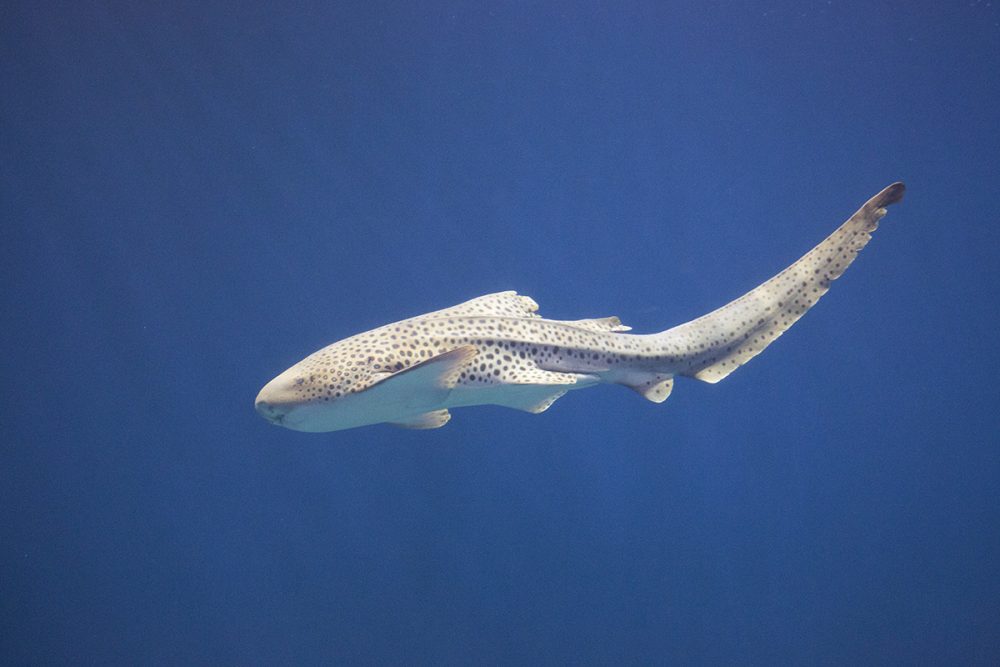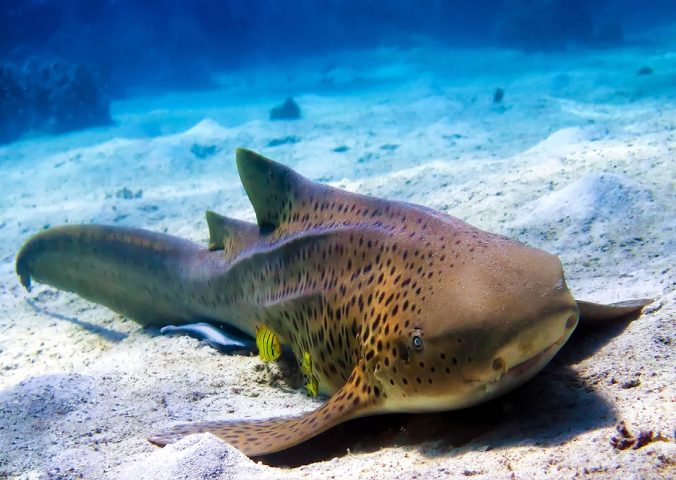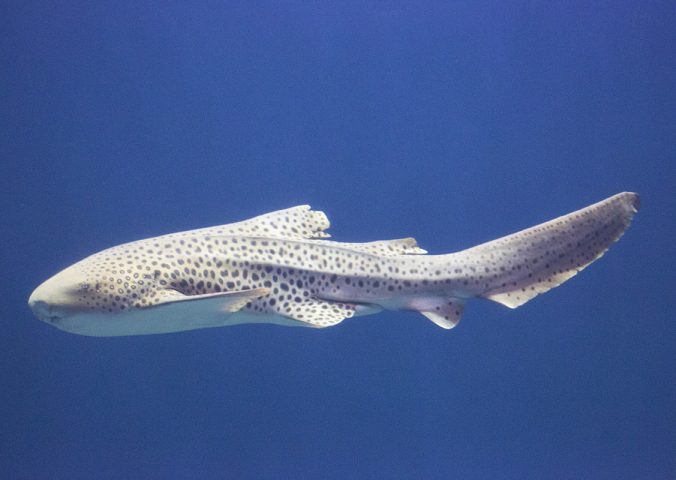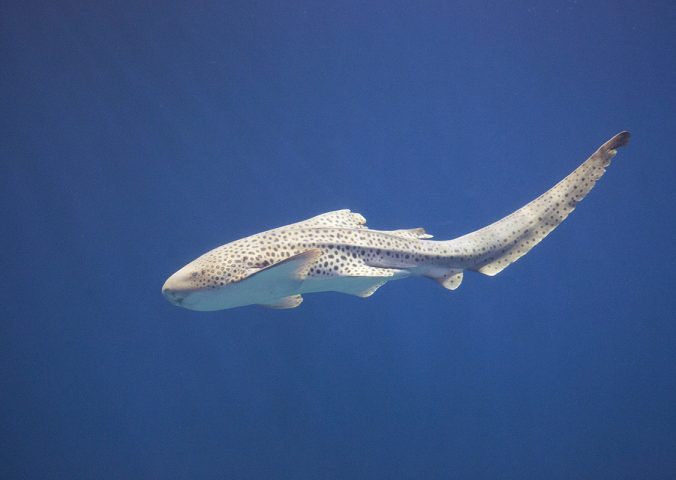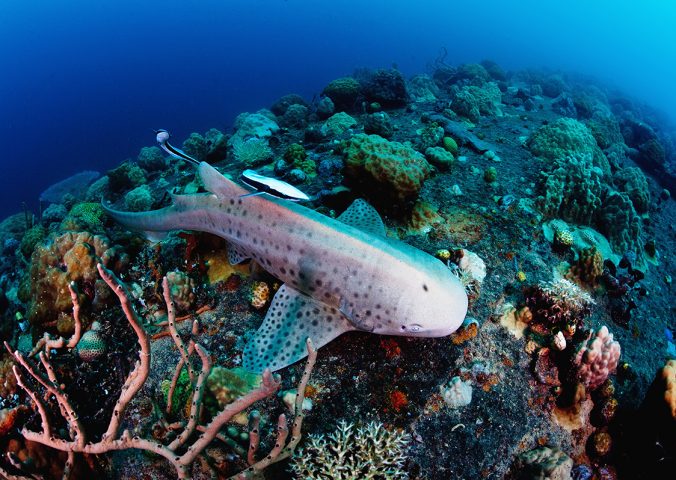About
The zebra shark gets its name from the colouration of the juveniles, which have black and white striped markings. As they mature their colouration changes from stripes to spots and that is why they are also known as leopard shark!
Zebra sharks are the only member of the family Stegostomatidae and are found in the Western Pacific and Indian Oceans. They show strong site fidelity – returning to previously resided-in areas after travelling long distances. Zebra sharks are typically solitary, although occasionally aggregate in groups of 20 to 50 individuals. As a nocturnal species, they are regularly encountered resting on sandy substrate by divers during the day, and hunting for molluscs, fish and crustaceans at night. They are agile swimmers, able to squeeze through crevices when hunting prey. The zebra shark does not exhibit sexual dimorphism (where the two sexes exhibit different characteristics) and reproduces through oviparity, laying between 40 and 80 eggs per year. Size at birth is between 20 and 36cm. Captive individuals have reached maturity between 6-8 years.
Major threats to this species include bycatch from trawl fisheries and habitat destruction and coastal development, particularly of mangrove forests utilised by juveniles.
This species’ range occurs within several marine protected areas in Australia, and it is protected under legislation within Malaysia.
- Order: Orectolobiformes
- Family: Stegostomatidae
- Population: Unknown
- Trend: decreasing
- Size: Up to 3.5m (?)
- Depth Range (m): Coastal
EDGE Score
Distribution
The zebra shark can be encountered in the coastal tropical waters of the Western Pacific and Indian Oceans.
Habitat and Ecology
This species typically inhabits inshore waters, such as coral and rocky reefs and sandy plateaus down to depths of 62m. Although showing seasonal movements of over 1,000km, they often return to the same sites each year. They have a good survival rate in captivity. Juveniles inhabit inshore, shallow coastal areas such as mangroves and seagrass beds whereas adults are typically found on coral and rocky reef habitats.
